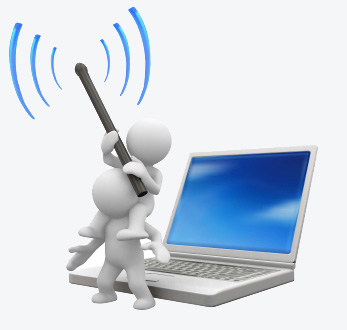By Axel Volonté, Enterprise Networks & Communications Regional Product Manager, Zebra Technologies
$400 million. That’s the estimated loss from 700 million compromised records caused by data breaches, according to Verizon’s “2015 Data Breach Investigations Report.” There’s no question that data breaches are becoming a bigger threat to companies worldwide, particularly as their customers and employees rely more on technology to do their jobs – and as more and more devices are connected via the Internet of Things (IoT).
Large companies operating in the logistics, hospitality, retail and healthcare sectors are aware of the importance of securing their wireless networks against the danger of intrusion, theft or permanent loss of information and connectivity. In today’s world, your security strategy should include everything from your network and the data that transmits over that network to the applications that sit on your employees’ mobile phones.
This is where Wireless Intrusion Prevention Systems (WIPS) comes into play. This system accurately identifies access from unauthorised devices to protect the physical and wireless networks, either public or private, of an organisation and automatically takes countermeasures against potential intrusions. WIPS ensures users are connected to the correct network, with the required security and are in compliance with corporate policies.
But not all WIPS security solutions are created the same. These five key questions will help you evaluate the security features offered by WIPS that protect corporate Wi-Fi networks:
- How many threats does it detect – and how much information do you get about the attacks? The more specific the detected threat, the more secure the system will be. And the more visibility you have into those attacks, the easier it is to take the action that is appropriate for an identified attack.
- How long does it take the system to detect a rogue device? When it comes to protecting your data, seconds count. According to Verizon, in 60 per cent of cases, attackers are able to compromise an organization within minutes, so the faster that rogue devices are detected and terminated, the better.
- Does your wireless network support forensic analysis? Wireless networks that have the ability to record data points both before and after a data breach – and save them for further investigation – can help companies uncover and fix vulnerable points in their network.
- Does your network support automated regulatory compliance? Make sure your wireless solution can automatically generate the regulatory compliance reports necessary for quarterly or annual audits. Relevant regulations include PCI DSS for the retail industry, HIPAA for the healthcare industry, the Department of Defense Directive 8100.2 for Federal agencies, the Sarbanes-Oxley Act for enterprises and the Gramm-Leach-Bliley Act for the banking industry.
- How easy can you set up and change network rules? Rule-based network management can reduce the burden on administrators. Be sure to ask how many filters your wireless system can support – and how easily you can filter the system’s alarms to enable easier security management.
WIPS must prevent and detect threats, and swiftly take action once detecting foul play. When a wireless threat is detected, administrators must be able to terminate the connection.
There are systems in existence that can gather information obtained from an organisation’s network of sensors and access points (APs) under a central console. These solutions can then manage, monitor and protect WLAN environments against abnormal behaviour originating either inside or outside the organisation. They can offer automated protection, forensic incident analysis, network assurance, regulatory compliance, multi-vendor management, remote troubleshooting and locationing services.
Forward-looking organisations are combating network intrusion using today’s most advanced 24×7 monitoring tools to identify network vulnerabilities, as well as to recognise and stop network attacks before they cause serious damage.








